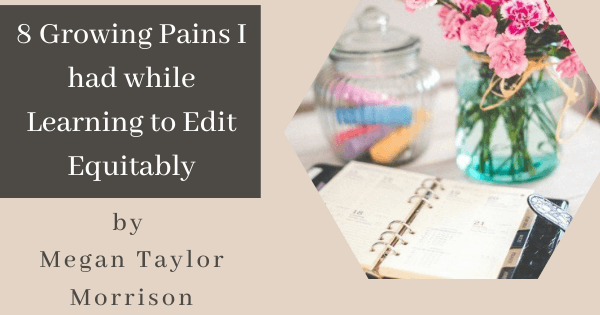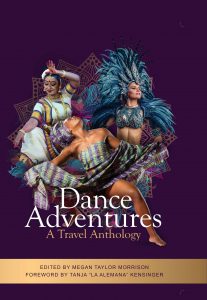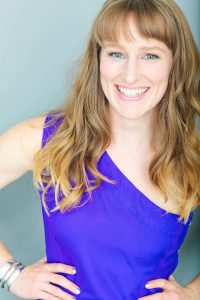
In the summer of 2018, I sat in my favorite café in Santo Domingo, Dominican Republic, writing the intro for my anthology Dance Adventures: True Stories About Dancing Abroad. While this was my first book, I had no anxiety about its writing — I was, after all, a professional. With a degree from a world-renowned journalism school and a track record of careful work that garnered praise, I thought myself more than up to the task.
Still, I knew Dance Adventures would require extreme diligence. I would not not just be releasing my own work, after all, but the work of renowned performers, dance educators and dance scholars whom I’d coached through the writing process. I wanted to make sure their short-stories represented each dance tradition and country respectfully, as well as did justice to the book’s premise: that dance is a potent force for meaningful, cross-cultural experiences abroad. I saw the potential for each story, as well as the collection as a whole, to demonstrate that dance can impact all of us, no matter our background.
For the next two years, I worked closely with the writers. And by the time May 2020 rolled around, I was both proud of what we’d created and exhausted. More than a little relieved to be done with the project, I began preparing for its public launch. Then, just before the book’s release, the Minneapolis police killed George Floyd.
In the following weeks, as conversations about white privilege, the value of Black lives, and the drastic inequality in America grew, I took a closer look at my project. What I saw made me massively disappointed in myself, but also opened my eyes: only a quarter of Dance Adventures’ authors were people of color. If I released the book as it was, it wouldn’t be a symbol of the uniting power of dance or support better representation in the performing arts and journalism. Instead, it would be another white-washed publication — that is, part of the problem.
I’ll admit that, for the first few days, I resisted the idea that I needed to make changes to the book. I was tired of writing and editing, and I was ready for this massive project to be finished. But then it hit me: This was white fragility on steroids. I wasn’t going to stand up for equality in America simply because I didn’t feel like it? Or it might require a few more months of putting my nose to the grindstone? Ridiculous.
As I overhauled Dance Adventures in the ensuing weeks, I learned many lessons and took many steps to improve the book. I will share more about this below, in hopes that this article can serve as a reminder (being able to forget about our privilege is quintessential privilege) of the work we still have to do, as well as catalyze more conversations about equitable editing. We have the opportunity to help one another in rising to a new level of responsibility and representation.
So, let’s rewind back to those final days of May 2020. Here’s what a took away from the next, necessary stage of the project:
Fact checking is different than checking white privilege: While I could verify information about the history of salsa dancing in Cuba or the name of a dance venue in Angola, there was no resource for identifying my blind spots as a white American woman who grew up in an upper-middle-class family on the West Coast. To do that, I would have to bring in reinforcements. Which brings me to my next point:
It’s important to have mentors: I requested that all authors have a mentor (and preferably a mentor from the country they were writing about) read their work: This way, there would be an opportunity to catch and adjust anything that the mentor felt was misrepresenting their dance or country.
You can hire a perspective consultant to find blind spots: It dawned on me that all of my proofreaders and my assistant editor were white, so I set out to find someone with a very different background than my own who had expertise in writing about foreign cultures in a respectful, informed manner. Through an article in my alumni magazine about a group of students’ recent study abroad experience in Ghana, I found the contact information for Dr. LaToya Bracket — a visiting assistant professor at the University of Puget Sound who held a PhD in African American and African Studies. I immediately reached out to Dr. Brackett who went through each story in the book with a fine-tooth comb. To my great relief, all of our authors were grateful to Dr. Brackett for her review of their stories and happy to adjust their work based on her feedback. Some of the most common feedback she gave is included in the next two points.
Positionality statements are key: Dr. Brackett pointed out that all of our contributors of color had a positionality statement. In the case of Dance Adventures’ stories, having a positionality statement meant that authors shared about any key experiences that shaped their worldview, decisions or actions. Positionality statements are often used in academia, as a researcher’s background will influence what they choose to study, the angle they take to their research, and the methods they select. In contrast to our BIPOC contributors, none of our white contributors (including myself) had included one.
As I pondered why, I realized a couple of things. The first was that most of our BIPOC contributors happened to have formally studied anthropology or performance in an academic setting where positionality statements are taught. I myself had never learned about the concept while studying journalism or in my career as a writer and editor.
The second reason was more poignant to this piece: White people are not often asked to justify where they’re from or why they’re doing what they’re doing. We have a freedom to window shop, travel or walk into most establishments without being scrutinized. We don’t think about positionality because we don’t often have to justify ourselves. Furthermore, as part of the majority, we often unconsciously assume that people will know we are white. Realizing this bias and blindness, I insisted on positionality statements in all of the stories.
Make sure to acknowledge the elders: This can be another critical piece of positionality. Who taught you what you know? Where did these artforms originate? Equitable writing means you don’t just say you’re a b-boy, you share who mentored you in breaking and more about the history of the dance. History, especially when it’s complex, needs to be acknowledged.
In addition, those who are practicing a dance that comes from a different culture (such as a white breakdancer or a Black Irish dancer) must think critically about who they study with. Are they learning from the creators of the dance and supporting the communities where these art forms originated? Are they educating themselves about a dance’s history and the evolution of the artform? This is part of showing respect for other cultures.
Recognize microaggressions, including “othering”: “Othering” describes expressions of prejudice on the basis of group identities, and it includes conscious or unconscious racism and ethnocentrism. In the book, there were several instances of microaggressions. These included saying that someone dancing was “mesmerizing” or “fascinating,” as well as describing a cultural practice or group of people as “mysterious.” In the later case, it is unnecessarily exotifying something that is simply unfamiliar to the writer.
Take a Look at Your Network (and Seek more BIPOC contributors): I wanted to provide a platform for many different types of people to share their stories. Realizing that the majority of people I know are white, I needed to consciously go outside of my typical network to ensure at least half of the contributors to Dance Adventures were from BIPOC communities.
Thus began my extensive outreach effort on Instagram to dancers of color. As an unknown entity, I’m not surprised that 99 percent of the messages I sent went unanswered. Finally, however, I found incredible artists who were happy to take part in the project. They contributed some of my favorite stories to the book and brought additional, invaluable perspective.
Looking back, I am profoundly grateful for this opportunity to dive into equitable editing. This humbling experience highlighted my blind spots and invited me to take a close look at my own white privilege. It changed who I am as an author and journalist, made Dance Adventures a book I am proud to release, and inspired me to share the lessons I learned with others.
Writer Megan Taylor Morris on editing with an eye toward equity: Share on X
Megan Taylor Morrison is an avid dance adventurer and certified life and business coach. She has studied local dance forms in 16 countries on six continents, as well as designed and co-led retreats to Argentina, Brazil, the Dominican Republic and India. In partnership with Melaina Spitzer, Meg debuted the talk “Dance Travel: The Next Era of Dance Education,” at the National Dance Education Organization (NDEO) Conference in 2018.
Through lectures, roundtables, and articles, Meg continues to share best practices for cultural immersion through the arts. She holds a master’s degree in journalism from Northwestern University and a bachelor’s in international affairs and French from the University of Puget Sound.
Photo on Visualhunt.com


At least you didn’t have to dump in of the writers to get others in their place.
Good point!
Thanks so much for this, Megan! Great tips on an important topic.
Thank you for this post. It’s so important to consider our underlying ways of thinking, and make sure that we’re aware of how they’ve shaped us. That’s why we need different voices from very different backgrounds. We need to consider the world from lots of different perspectives, and it’s easy to forget that our perspectives are just that – perspectives.
It’s definitely easy to do…and these tips offer good solutions.
A rough lesson to learn. Had they been authors around the world writing about their own culture’s dance, there wouldn’t have been a problem.
Very true!
These are great tips on how to edit when you’re writing about a culture that you’re not from. Thanks so much for your advice.
Thanks for coming by, Natalie!